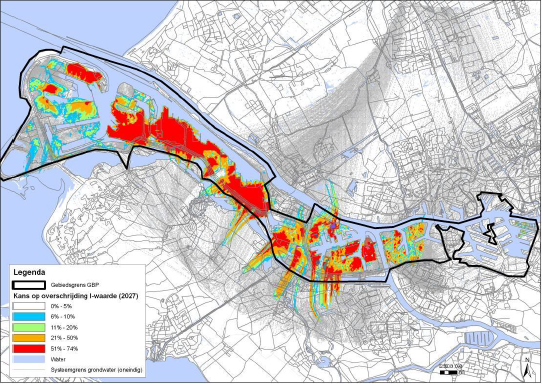Data Assimilation for Management of Industrial Groundwater Contamination at a Regional Scale
Previous Research
Involved: 
- Ibrahim Hoteit
- Shuyu Sun
- Mohamad El Gharamti
Description:
Groundwater contaminant models are subject to several sources of uncertainties from poorly known parameters and inputs, including initial and boundary conditions of groundwater flow and reactive transport models: when did the contamination start; how much contaminant mass is present in a pure phase source zone; where exactly is the pure phase and what is the rate at which biodegradation takes place. Other uncertain aspects are the heterogeneity of parameters as the hydraulic conductivity, groundwater recharge and the redox state of the groundwater. Therefore, model predictions of where and when a contamination crosses a plain of compliance, with what concentration and how long it takes before a pure phase source zone dries up, can be quite uncertain. Monitoring data can be of course used to reduce these uncertainties. However, the data that provides information about these processes is often “indirect” such as dissolved concentrations of the contaminant, degradation products in monitoring wells or pumping wells, etc. Moreover, these observations are often: (a) limited due to budget constraints; (b) taken at “suboptimal” locations because of lack of an efficient observation strategy and accessibility issues as industrial activity often continues at the site, and (c) measured at “suboptimal” scale as for instance the groundwater is mixed as it is taken from a monitoring well with a certain length of the well screen. How to collect and use these data in order to reduce, in a cost effective way, the risk of undesired spreading of contaminants that is not captured by a monitoring network is an open area of research. We are working on:
- Optimal model update: Use the data in an optimal way to update the model prediction and to reduce the uncertainties from both model parameters and inputs (such as initial and boundary conditions).
- Model validation and uncertainty quantification: Build a framework describing how the monitoring data can be used to validate the model predictions, including estimates of the uncertainties about involved model parameters and inputs. Many prior uncertainty estimates of model parameters (both variation and spatial correlation) are generally based on limited data, experience from previous studies at other contaminated areas or even from expert judgments.
- Design of an optimal monitoring strategy: Propose a strategy to optimize the monitoring system of the contaminated area such that the likelihood of a contamination crossing a plane of compliance at an unacceptable concentration level/mass flux without being captured by the monitoring network is less then a certain threshold value that is approved by the local authorities. This should allow to analyze the impact of collecting a set of measurements on the reduction of the estimates uncertainties even before the measurements are actually taken.
- Johan Valstar
